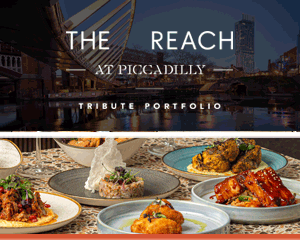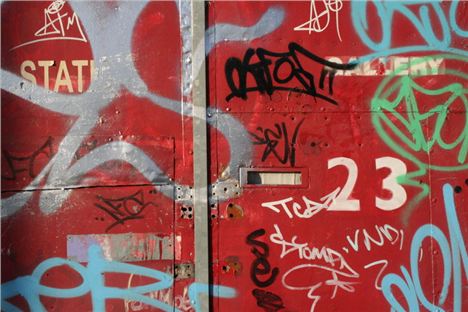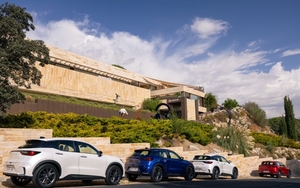“WHAT is the city? Who is the city for? Who controls the city?”
No, that is not the tagline for the new Batman film and the city in question is not Gotham. These are the questions that will have people scratching their heads at Static Gallery's Noise Debate, to take place this Thursday.
Clubs are...the ones that have to be the most open and reasonable where change is concerned, while there's no responsibility or requirements put on the residents themselves - Paul Sullivan
It comes at a time when Liverpool's city centre is undergoing something of a transition. Venue closures marked the back end of last year – most notably the Masque Theatre, a key platform for live music in the city – and the Contemporary Urban Centre.
At the same time, the city council announced that a Cumulative Impact Policy (CIP) was to be applied on the Ropewalks, Cavern Quarter and Victoria Street areas.
 Paul Sullivan, Director Of
Paul Sullivan, Director Of
Static, LiverpoolThis all equates to an uncertain future as to how Liverpool's 'night-time economy' (or 'lash scene', as some prefer to call it) will evolve.
Static has its own motivations for hosting this event, beyond being concerned city dwellers: it recently received a Noise Abatement Notice from Liverpool City Council, the result of a complaint by a restless nearby resident.
Paul Sullivan, director of the gallery, is hopeful that a resolution can be found through understanding between themselves and the complainant, rather than having to mount an expensive legal challenge to the notice. Much of Static’s operating income comes from gigs.
But the bigger issue for him, he says, is the way in which the new CIP legislation will change the nature of the city centre.
“The things that grab the headlines are the impact on noise, the impact on the nightlife, and, of course, crime; but I think the underlying reason for the city council's actions is more to do with wider ideas for what the city centre should be.
“A lot of the arguments for change that Councillor Munby and the residents are putting forward are really good ideas; my problem is that they're using legislation to enforce it.” This, Sullivan says, is at the heart of his decision to host the Noise Debate.
 Steve MunbyStephen Munby, city cabinet member for neighbourhoods, is the councillor at the head of the push to have the CIP implemented and will be one of the panellists.
Steve MunbyStephen Munby, city cabinet member for neighbourhoods, is the councillor at the head of the push to have the CIP implemented and will be one of the panellists.
His statement, following the approval of the CIP at the council's licensing committee meeting earlier this month, argued that the new measures had residents’ interests at heart.
“I believe that now is the right time to introduce such a policy as it will give city centre residents more power to stop nuisance premises from opening in the first place, and allow all residents to shape what the city’s night time economy looks like…I am strongly supporting bringing in a CIP to cover the whole city centre, as this will future-proof any policy and give city centre residents the most influence.”
Through the introduction of the CIP, new licensed premises must demonstrate how their business will positively impact the night-time economy in that area.
Time will tell what effect this could have on the three areas already designated. Surviving venues, with less competition from newcomers, may be able to forge a clearer identity for themselves.
Displacement of businesses can be a good thing, and by applying the CIP only in specific areas, the opportunity is there for other areas of the city centre, such as the Baltic Triangle, to thrive.
“Our area is currently growing in terms of its activity. The A Foundation building is going to see regular events and our building is getting refurbished. We're still optimistic about the area picking up,” says Picket founder Philip Hayes.
Cllr Munby picks out London Road as another area that could benefit. His optimism is encouraging, but the risk is that the problems associated with nightlife will simply move with the trade, causing disturbances to residents in the new areas.
Munby's hope is that in the “current economic climate” such proliferation will not happen on an uncontrollable scale. “As with all new legislation, the situation will have to be monitored,” he says.
As the CIP-affected areas become increasingly resident-friendly, changes in the nature of the cityscape will be brought about. But, Sullivan adds, the obligation to compromise is falling too heavily on the licensees, with little expected of the residents.
“The idea of responsibility really is one of the key issues, and at the moment clubs are in a position where they're the ones that have to be the most open and reasonable where change is concerned, while there's no responsibility or requirements put on the residents themselves.”
Sullivan cites the work done at Static to insulate the property to lessen noise seepage, while neighbouring Georgian period properties with little or no insulation remain as such.

Cllr Munby accepts there needs to be give and take on all sides.
“I think we need a sensible conversation about how we make the city centre work, there are a number of very entrenched polarities”.
“Just as clubs and bars can’t expect to have music played as loud as they want, residents can't expect it to be like a completely deserted area.”
He believes that “most residents expect a certain amount of noise” and sees the debate as an opportunity to continue the dialogue that must take place if the new legislative measures are to be understood and properly used.
A 2008 Local Area Study found that city centre residents cited their closeness to work and nightlife as one of the area's positive attributes. Yet it also found that “the proximity to Liverpool's nightlife also was a major issue for local residents in terms of anti-social behaviour, late night noise, parking problems and litter”.
The argument of who was there first falls flat on its face when you consider that, historically, the city centre has always been a place for people to live, as well as work and play.
And there's the nub. If the city is to become an area that increasingly favours the peace and quiet of residents, where does the business part go? If the amenities move away as residents move in, then the area is no longer “Town”, but, as Sullivan puts it, “an urban version of suburbia”.
There will, says Sullivan, be representatives from most key venues in the city as well as figures from city centre hotels in attendance along with interested residents from across the city. Other panellists are architect Doug Clelland and Daniel Hunt of Ladytron.
It may be too late to prevent the introduction of the CIP, but at least the conversation about what our city centre will shape up to be is alive and well.
*Noise Debate, Liverpool: Urban Metropolis or Suburban Hinterland, Static Gallery, 23 Roscoe Lane, Liverpool L1 9JD, Thursday February 2. 6pm. Related reading from our archives here
















